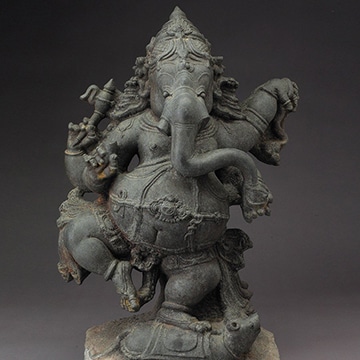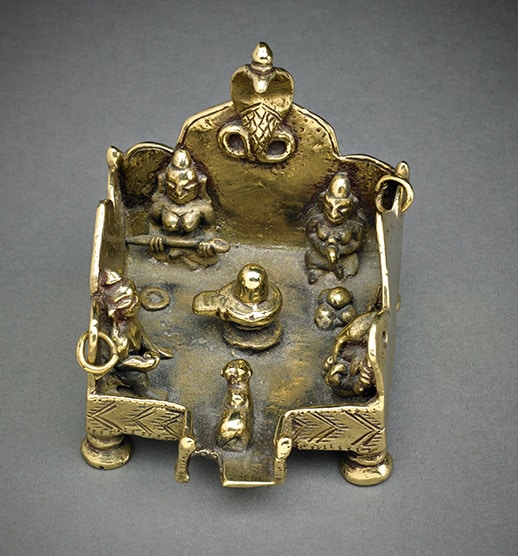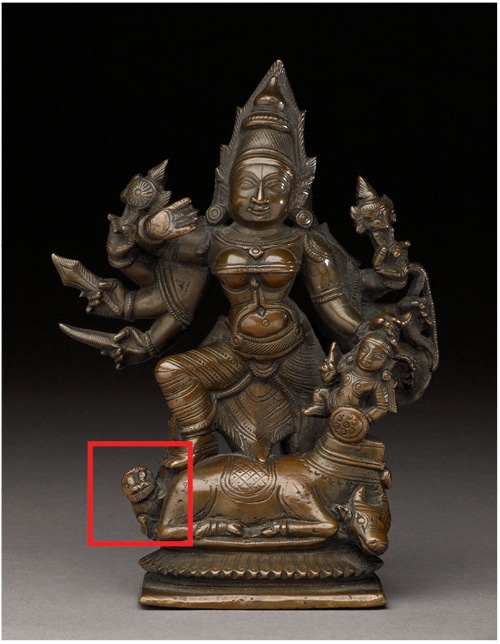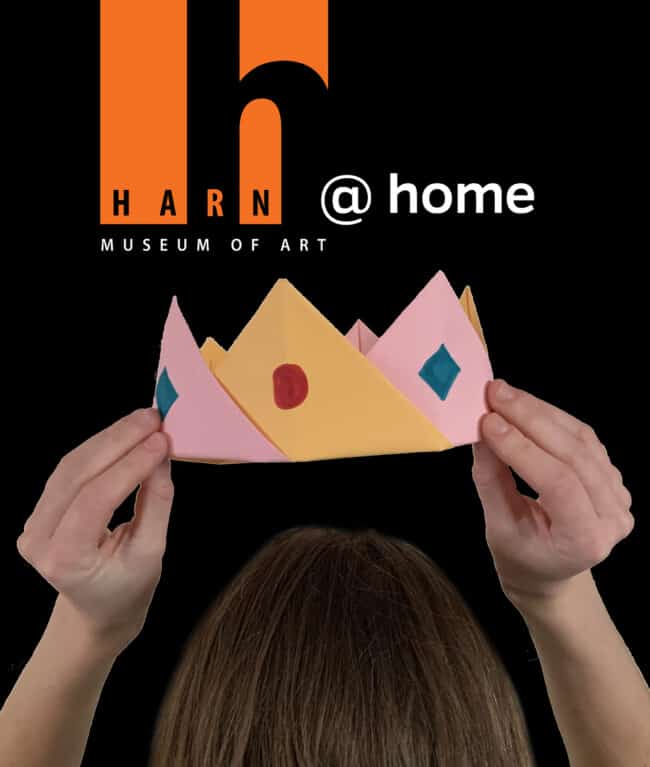What You’ll Do
Watch the video to learn about Dancing Ganesha then choreograph a dance for the beloved deity.
Tips for choreographing your dance:
- In India, elephants symbolize wealth and strength. How can you convey ideas of wealth and strength through movement?
- Observe the positions of Ganesha’s arms and legs. Notice how he is balancing on one foot and pointing his many limbs in various directions. Practice alternating your balance from one foot to the next. How is balance important to dance?
- Look at the curves of Ganesha’s body, such as the angle of his trunk and roundness of his belly. How can you create curving lines with your body?
- What shapes do you see within this sculpture? The top of Ganesha’s head forms a cone-shaped point. What shapes can you make with your body?
- Made of stone, this sculpture has both smooth and rough areas. How can texture be conveyed through dance?
- Consider the way an elephant moves its trunk and ears. Think about how a small mouse can scurry. How can the movement of animals inspire our dance moves?
- Hindus consider Ganesha to be a “remover of obstacles.” He can clear a path through life like an elephant can clear a path through the jungle. How can you move your body to appear as though you are clearing away obstacles in your path?
Things to consider:
- How long will your dance be? How many moves will it contain?
- Will there be music? If so, what kind?
- Will you transition from one dance move to the next gracefully like a mouse or abruptly like an elephant?
- Imagine dancing with the heavy head of an elephant. How might that influence your dancing?
Try This!
- Try dancing in front of a mirror so you can watch how your body moves through the different dance moves you create.
- Use a camera to record your choreographed dance so that you can replicate it or share it.
- In his hands, Ganesha holds different items, including a bowl of sweets in his lower left hand and a broken tusk in his lower right. Try incorporating props into your dance.
- Perform your dance in front of family and friends to teach them about the Dancing Ganesha sculpture as well as the Hindu god himself.
Object Connection

Ganesha is the Hindu god of wisdom and success. Hinduism is an Indian religion and way of life. This god has the body of a man, the head of an elephant, four arms and a very large, round belly. In India, elephants symbolize wealth and strength. Like the way a strong elephant can clear a path through the jungle with his large head and pointy tusks, Ganesha can clear a path through life by removing obstacles that get in the way. He rides on a mouse who is a clever “finder of the way,” able to chew through any troubles that arise.
Ganesha holds many objects in his hands that represent different aspects of his identity. In his upper right hand, he holds a tool that he uses to destroy obstacles. A snake, which represents all things threatening and problematic, wraps around and dangles from his upper left hand, showing Ganesha’s ability to remove challenges in life. Ganesha loves to eat sweets! He holds a bowl of sweets in his lower left hand. One day, the moon god made fun of Ganesha for eating too many sweets, causing Ganesha to break off his tusk in anger and curse the moon with eternal waxing and waning. Ganesha holds this broken tusk in his lower right hand.
In this sculpture, Ganesha is depicted mid-dance, balancing on one leg, and pointing his many limbs in various directions. His dance can be associated with his father, Shiva, who is known as the Lord of the Dance. Even though this 800-year-old sculpture was carved out of stone, the body of Ganesha appears smooth, fleshy and full of movement.
Lesson Plan by Sarah Bass, Family Programs Intern & 4th-year Art and Art History major in UF’s College of Art School of Art and Art History



